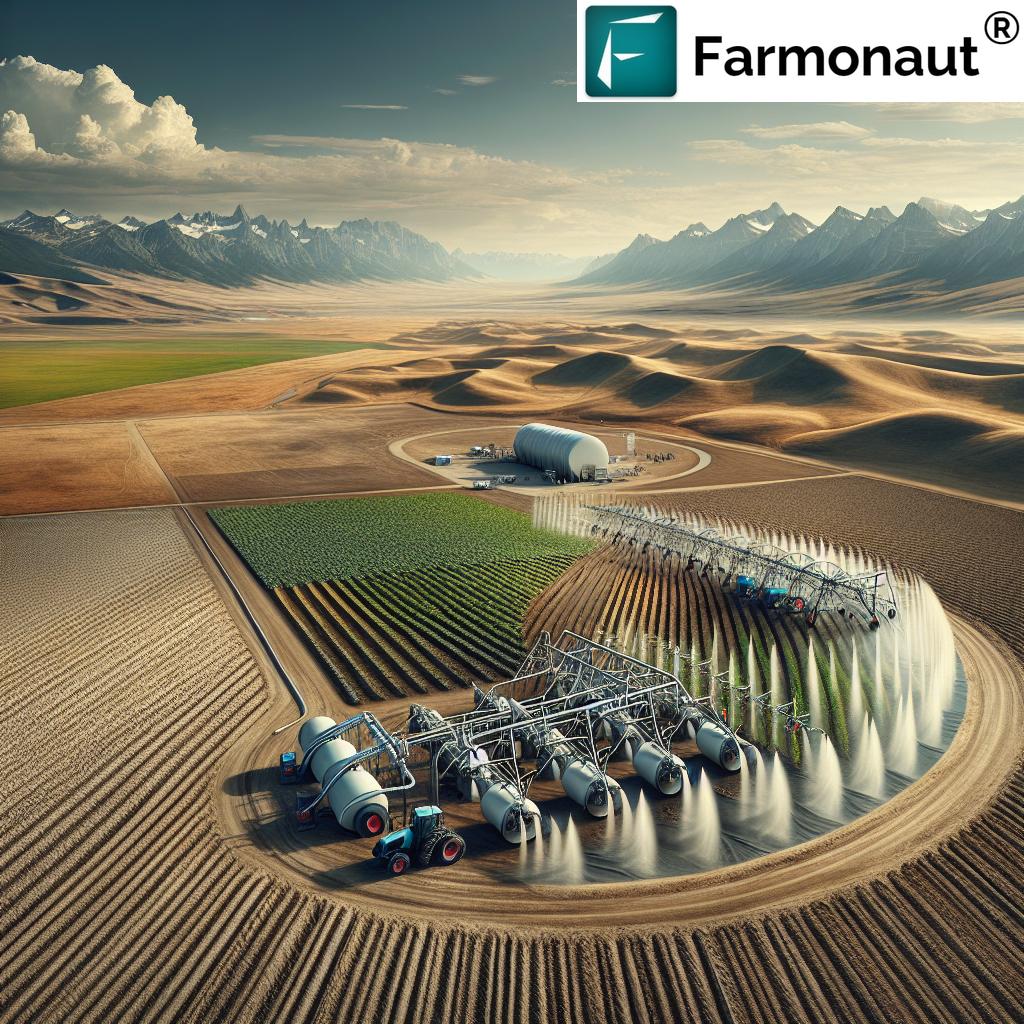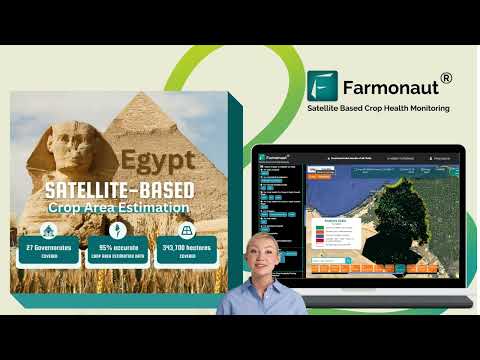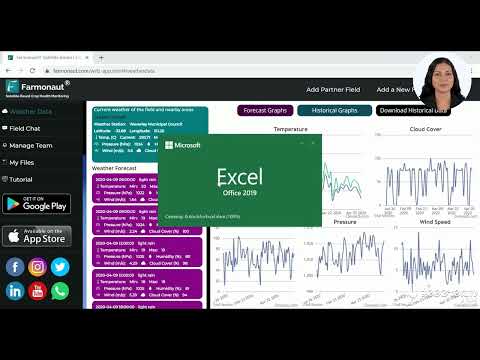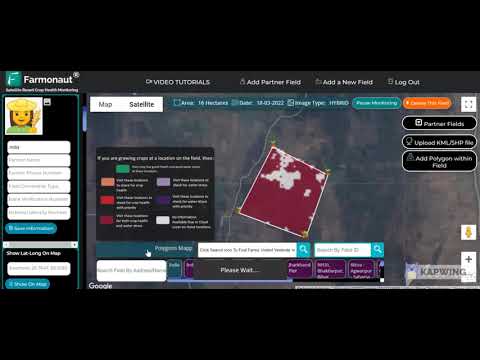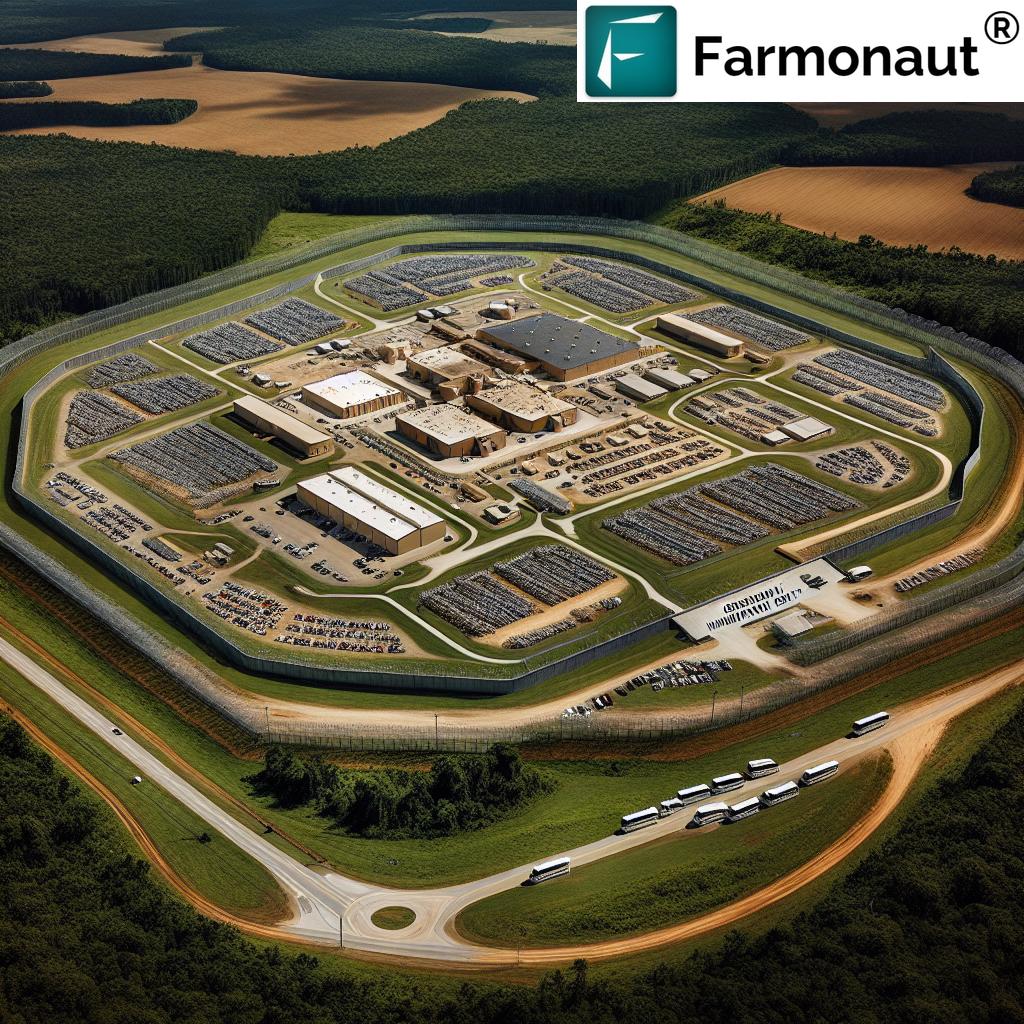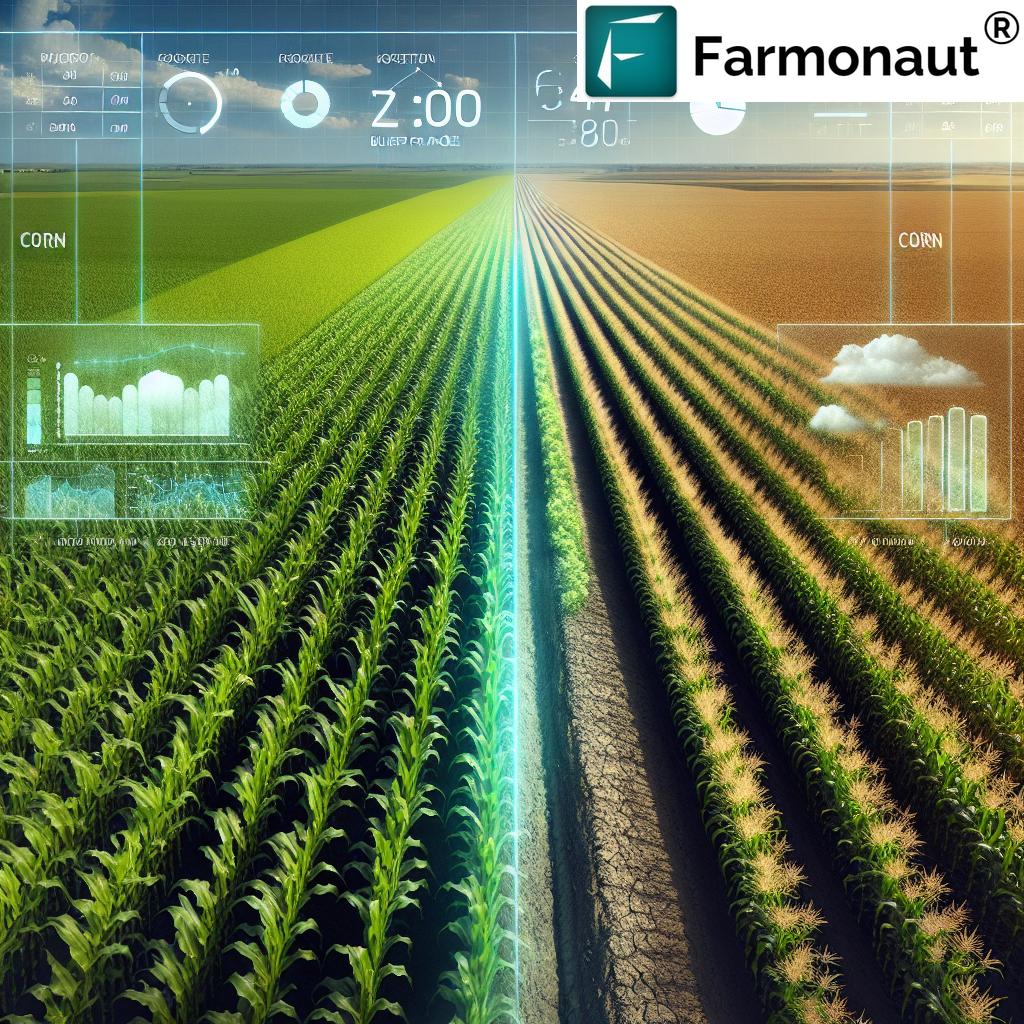5 Effective Ways Recycled Water Supports Montana Farms in Drought
Table of Contents
- Introduction: The Urgent Challenge of Montana’s Drought
- Trivia: Water Savings on Montana Farms
- Montana Drought Conditions: The Context
- Innovative Water Recycling for Agriculture
- Comparative Benefits Table: Recycled Water on Montana Farms
- 5 Effective Ways Recycled Water Supports Montana Farms
- 1. Improved Irrigation Efficiency Through Recycled Water
- 2. Soil Moisture Conservation Techniques Enhanced by Recycled Water
- 3. Alternative Water Sources Sustain Crops During Drought
- 4. Supporting the Gallatin Watershed and Community Needs
- 5. Advancing Sustainability and Resource Management in Agriculture
- Satellite Technology: Optimizing Water and Soil Management
- Water Recycling Initiatives: A Sustainable Model
- Trivia: Montana’s Recycled Water Initiatives
- Farmonaut Solutions for Supporting Sustainable Agriculture
- Farmonaut Subscription Options
- Frequently Asked Questions
- Conclusion: A Hopeful Path for Montana Farms
Introduction: The Urgent Challenge of Montana’s Drought
Montana faces some of the harshest drought conditions in the United States. With our state entering its fifth consecutive year of arid climate, agricultural producers across Montana are wrestling with a unique set of challenges. Water scarcity is testing our ability to sustain both crops and communities. The need for innovative water recycling for agriculture has never been greater. This blog reveals how recycled water—specifically, reclaimed wastewater—offers vital, sustainable solutions that help Montana farmers, our environment, and our future.
“Montana farms using recycled water can reduce freshwater usage by up to 40% during severe drought conditions.”
Montana Drought Conditions: The Context
According to the 2025 Drought Outlook by the Montana Department of Natural Resources and Conservation, last year’s dry and hot weather has only exacerbated the struggle for our state’s agricultural producers. With soil moisture depleted, the drought has forced communities, especially in Manhattan and across the Gallatin region, to confront water shortages head-on.
This ongoing crisis places severe pressure on maintaining agricultural livelihoods. Farmers are facing the challenge of sustaining crops amidst climate change and rapid population growth. Over-dependence on natural freshwater reserves is neither tenable nor sustainable. If we continue consuming resources as we have, the future of Montana’s agriculture—already teetering on the edge—could become even more uncertain.
Big Sky’s Innovative Water Recycling Facility — A Model for Sustainability
Amidst these arid climates, innovation in southwestern Montana is emerging as a beacon of hope. In Big Sky, a brand-new, $60 million state-of-the-art facility is making waves by tapping into recycled wastewater. This water recycling for agriculture provides a vital, alternative source for irrigation—a solution that is both environmentally and economically sustainable.
This facility converts reclaimed wastewater into artificial snow, which covers ski runs in winter. As this snow melts throughout the summer months, it gradually releases water back into the Gallatin watershed. This not only extends the ski season but serves as a model for sustainable farming in arid climates and opens up alternative water sources for crops all year round.
The impact is significant: It has allowed us to maintain access to irrigation water during the hottest months—precisely when demand peaks and natural supplies are at their lowest.
Comparative Benefits Table: Recycled Water on Montana Farms
To quickly illustrate the impressive impact of recycled water on Montana’s agriculture during drought, here’s a data-driven comparison. This table connects the five key ways recycled water supports farms, helping underscore the SEO themes of “recycled water,” “Montana farms,” and “drought benefits.”
| Way Recycled Water Supports Farms | Estimated Water Savings (%) | Impact on Crop Yield (%) | Community Benefit (Brief Description) |
|---|---|---|---|
| Improved Irrigation Efficiency | 35–40% | 10–18% increase | Reduces water waste and ensures reliable water supply for farming families. |
| Enhancement of Soil Moisture Conservation | 20–25% | 6–12% increase | Supports long-term soil health, securing yields for future generations. |
| Alternative Water Source During Drought | 30–35% | 11–15% increase | Minimizes risk of crop failure; supports food security in rural areas. |
| Watershed Management & Snowpack Application | 25–30% | 10–12% increase | Replenishes local water tables and stabilizes water for communities. |
| Sustainable Resource Management | 18–22% | 8–10% increase | Reduces stress on natural resources, paving the way for green growth. |
5 Effective Ways Recycled Water Supports Montana Farms in Drought
At the crossroads of water scarcity and demand, our state must tap into innovative agricultural water solutions. Let’s explore each solution in depth, from irrigation to community impact, under the theme of sustainability and environment.
1. Improved Irrigation Efficiency Through Recycled Water
The Montana drought conditions have made irrigation efficiency not just beneficial, but absolutely necessary. Traditional irrigation—often reliant on rainfall or depleting freshwater sources—does not suit our increasingly arid climate.
By using recycled water—specifically, reclaimed wastewater for irrigation—we optimize how we deliver moisture to crops. Here’s how:
- Precision Application: Recycled water can be managed and scheduled to match the precise needs of the field, ensuring crops receive water during peak stress periods without excess runoff.
- Reduced Water Waste: This method prevents oversaturation and leaching of nutrients, a common issue with conventional watering, especially when weather is unpredictable.
- Consistent Supply: Facilities such as Big Sky’s treatment center provide a regular alternative source, reducing dependency on natural cycles and maintaining access to essential water in critical months like July.
Estimates from association of Gallatin agricultural irrigators show a 35–40% water savings when switching to recycled water irrigation—the difference between a successful harvest and crop loss.
2. Soil Moisture Conservation Techniques Enhanced by Recycled Water
Healthy soil moisture is the bedrock of resilient agriculture, particularly during extended droughts in Montana. Soil moisture conservation techniques, when paired with recycled water, transform the prospects for farms across the state:
- Slow-Release Hydration: The gradual melting of artificial snow made from reclaimed wastewater provides a steady moisture release, mirroring natural processes that replenish the soil through the summer months.
- Reduced Evapotranspiration: By keeping vital water locked in soil longer, recycled water application ensures crops stay hydrated even as surface temperatures climb.
- Preserved Topsoil Health: Water of consistent quality, disinfected to be free of viruses, pathogens, and bacteria, doesn’t degrade or stress the existing microbiome, preserving Montana’s unique soil characteristics.
Such strategies not only “tide farmers over” in drought but also protect our agricultural future. As soil moisture conservation techniques get enhanced with innovative water input, the risks of drought-induced yield loss drop dramatically.
3. Alternative Water Sources Sustain Crops During Drought
With every successive year of drought, the need for alternative water sources for crops intensifies. Montana’s innovative reclaimed water initiatives address this head-on:
- Facility-Driven Security: Treatment plants in regions like Big Sky provide farmers with a predictable source of safe recycled water, insulating agriculture from disruptions caused by shrinking reservoirs or unpredictable weather.
- Population Growth and Water Demand: As Montana’s communities expand, recycled water helps balance increased urban consumption with rural agricultural needs, preventing overcompetition for finite water.
- Resilience in Adverse Conditions: When natural rainfall or streamflow fails, access to recycled water is the difference between disaster and stability for Montana’s crops and food supply.
The 2025 drought outlook makes clear: Only with innovative drought relief initiatives like these can we continue sustaining our livelihoods across the state.
4. Supporting the Gallatin Watershed and Community Needs
Recycled water’s value extends far beyond crop roots—it is central to artificial snow for watershed management and the overall well-being of Montana’s communities.
- Extending Water Resources: By using artificial snow made from disinfected wastewater, facilities release water steadily into the Gallatin watershed every summer, replenishing the vital ecosystem and aquifers many towns depend upon.
- Boosting Community Resilience: Agricultural, recreational, and household water demands are harmonized. This integrated approach ensures that rapid population growth and development do not undermine agricultural or community stability.
- Reducing Health Risks: Advanced treatment processes ensure that the recycled water is safe—free of viruses, pathogens, and bacteria—providing reassurance for agricultural and recreational applications alike.
Montana’s next step is encouraging other river systems and counties to follow Big Sky’s lead, scaling recycled water initiatives for broader state benefit.
5. Advancing Sustainability and Resource Management in Agriculture
Resilient agriculture in arid Montana isn’t just about surviving drought; it’s about building systems that thrive under pressure. Recycling and reusing water is at the heart of this sustainable vision.
- Lowering Environmental Impact: Reduced freshwater withdrawal preserves local stream health, wildlife, and recreation, securing Montana’s natural beauty for generations ahead.
- Energy and Cost Savings: Modern facilities with state-of-the-art treatment minimize chemical use and decrease the energy needed to transport water, making farming more competitive.
- Compliance & Carbon Management: Using recycled water helps Montana farms meet state and federal sustainability targets, and with Farmonaut’s carbon footprinting platform, these efforts are easily trackable, auditable, and monetizable.
Innovative drought relief initiatives enable producers to not only endure, but set an example for the rest of the West on what 21st-century sustainable farming looks like.
Satellite Technology: Optimizing Water and Soil Management
The shift toward recycled water is most powerful when paired with precision agriculture tools. Farmonaut, the pioneering agricultural technology company, provides satellite-based farm management services that empower Montana’s farmers to:
- Monitor vegetation health (NDVI), catch early signs of water stress, and optimize irrigation windows
- Leverage soil moisture level insights to maximize each drop from recycled sources
- Receive AI-backed drought and crop management advisories—crucial as weather grows ever more unpredictable
- Track resource use, fleet deployment, and sustainability efforts, all from a single interface (see Fleet Management with Farmonaut: farmonaut.com/fleet-management/)
Implementing these tools, alongside alternative water sources, raises farm productivity, saves on water spend, and ensures lasting resilience across harsh Montana conditions.
Water Recycling Initiatives: A Sustainable Model for Montana’s Future
Let’s look at how recycling and reclaiming water delivers scalable relief and long-term value for our state:
-
Recycling Facilities as Scalable Solutions:
- Treatment centers built for Montana’s needs can serve communities large and small, reusing water locally and minimizing transportation loss.
- Communities across the state, inspired by Gallatin’s facility, can adapt proven processes to fit different local scales and crop types.
-
Supply Chain Transparency:
- Farmonaut’s traceability platform ensures that recycled water use is tracked transparently from farm to consumer.
- This builds external trust and meets increasing retailer and federal demands for sustainability documentation.
-
Flexible, Low-Cost Implementation:
- Unlike freshwater transfers, which are logistically and politically complex, recycled water can be routed directly from facility to farm with minimal infrastructure.
- This efficiency keeps operations competitive, even during tough economic cycles.
Our success with these innovative drought relief initiatives will set a new standard for sustainable farming in arid climates across the West.
“Over 60% of Montana’s recycled water initiatives directly support sustainable crop irrigation amid ongoing drought challenges.”
Farmonaut Solutions for Supporting Sustainable Agriculture in Montana
As we confront ongoing climate events and population change, Montana’s agricultural sector must leverage technology-driven solutions for continuous sustainability. Farmonaut makes this possible with:
- Satellite-Based Crop Health Monitoring: Real-time insights into crop stress, soil moisture, and pest outbreaks—paramount for managing the variability that drought brings.
- Jeevn AI Advisory System: Adaptive, satellite-powered guidance helps Montana producers maximize return on every drop of recycled water, especially during critical growth periods.
- Blockchain Traceability: Guarantees transparency across the food supply chain—from field to market—particularly when new water sources enter the production process.
- Fleet & Resource Management: Helps optimize costs for large and small operations as they deliver recycled water to fields throughout the growing season.
- Carbon Footprinting: Quantifies the sustainability of agricultural practices in real time, helping Montana stay ahead of compliance requirements and consumer expectations.
Try Farmonaut’s robust technology suite today and future-proof your farm against drought. Visit the Farmonaut app to start monitoring your Montana fields remotely.
Developers or agri-innovators can connect to Farmonaut’s data via Farmonaut’s public API. Full integration docs are here: API Developer Docs.
Farmonaut Subscription Options
Affordable, scalable choices for every operation! Manage soil, water, and sustainability with precision via Farmonaut’s subscription platform:
Frequently Asked Questions (FAQ)
What is recycled water and how is it used in Montana farming?
Recycled water in Montana is highly treated wastewater that’s safe for crop irrigation and environmental use. It is applied via advanced systems—like artificial snowpack or drip irrigation—particularly during drought, offering sustainable relief when traditional freshwater sources are limited.
Does using recycled water affect crop quality or safety?
No. Recycled water from modern treatment facilities is disinfected, free of viruses, pathogens, and bacteria. It is proven safe for crops, soil health, and even community uses in recreation and landscaping.
How does recycled water benefit Montana’s communities beyond agriculture?
Besides irrigation, recycled water supports watershed health, recreational snowmaking, and aquifer recharge. This helps stabilize water availability for growing populations and maintains the delicate balance between agriculture and community needs.
Can recycled water be used year-round in Montana?
Yes. Facilities like Big Sky’s operate year-round, applying recycled water as artificial snow in winter and supporting the watershed in summer as the snowpack melts.
How can producers or agri-entrepreneurs integrate Farmonaut solutions into their operations?
Farmonaut’s platform, available on Android, iOS, web, and via API, allows seamless integration of satellite data, AI advisories, and fleet/resource management—ideal for managing precision irrigation and drought adaptation plans at any scale.
Conclusion: A Hopeful Path for Montana Farms
Montana’s farmers are at the forefront of innovative water recycling for agriculture, leading the way with practical, eco-friendly, and economic solutions for drought. By investing in recycling facilities, adopting precision agriculture tools like those offered by Farmonaut, and supporting robust agricultural water solutions Montana, we can ensure a sustainable legacy for our land and our communities.
We urge all stakeholders—from producers facing unprecedented challenges to policymakers, community leaders, and technology providers—to seize this moment. Let’s expand the impact of recycled water across Montana, champion innovative drought relief initiatives, and secure a resilient future for everyone who calls Big Sky Country home.
Ready to take action? Start your Farmonaut journey today and optimize your water resources for every season and challenge ahead.
© 2025 Farmonaut. All reporting verified by our editorial team for fairness and accuracy.


